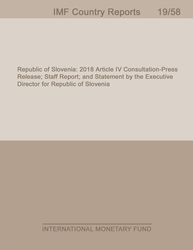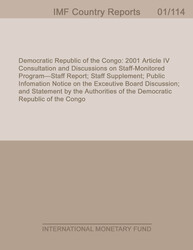
Burkina Faso: Staff Report for the 2014 Article IV Consultation, First Review Under the Three-Year Arrangement Under the Extended Credit Facility, and Request for Waiver and Modification of Performance Criteria
Volume/Issue:
Volume 2014
Issue 215
Publication date: July 2014
ISBN: 9781498329361
$18.00
Add to Cart by clicking price of the language and format you'd like to purchase
Available Languages and Formats
| English | ||||
| French |
Prices in red indicate formats that are not yet available but are forthcoming.
Topics covered in this book
This title contains information about the following subjects.
Click on a subject if you would like to see other titles with the same subjects.
Banks and Banking , Exports and Imports , Economics- Macroeconomics , Public Finance , Natural Resources , ISCR , CR , authority , real GDP , deficit , authorities plan , alleviating growth constraint , EITI compliance , Executive Board assessment , Burkinabè authorities , Natural resources , Debt sustainability analysis , Public enterprises , West Africa , Sub-Saharan Africa , Global
Also of interest
Summary
EXECUTIVE SUMMARY Growth remains robust, despite slight downward revisions. Growth estimates for 2013 and projections for 2014 were revised to 6.6 and 6.8 percent, respectively, reflecting weather and weaker terms of trade. Inflation is around zero, partly due to subsidized food prices. The revised 2013 current account deficit rose to 7 percent of GDP, with a drawdown of imputed reserves. The 2013 fiscal deficit increased to 3.5 percent of GDP, reflecting weaker revenues and spending for subsidies, partly offset by higher grants. In line with 2011 Article IV recommendations, the authorities maintained a prudent fiscal stance, despite numerous shocks, and implemented structural reforms that have improved the resilience of agriculture, especially cotton. Social transfers have been bolstered to ensure the benefits of growth are better distributed. An updated external stability analysis shows that the exchange rate is broadly in line with fundamentals, and an updated joint debt sustainability analysis maintains a “moderate” risk of debt distress. Program performance has been satisfactory. The authorities are requesting a waiver for a non-observance in the performance criterion for net domestic financing at end-December 2013, with most other quantitative targets met and all structural benchmarks for end-January and end-March met. Program targets differ mainly due to higher budget support projections. The 3 percent fiscal deficit target for the medium term macroeconomic framework remains unchanged, although with a higher share of current spending. Policy discussions focused on composition and quality of spending, transfers to public enterprises, and natural resource revenues. The authorities recently submitted a supplemental budget that increases the share of current spending for a higher wage bill and more social and public enterprise transfers, but remains within program targets as a result of spending offsets and higher budget support. The authorities are proposing an audit of large public enterprises to estimate needs for the medium term, and inform reforms to reduce transfer needs. The National Assembly did not approve a new mining taxation code by end-2013 as expected, rather, the draft code was sent back to the authorities for further consideration of investors’ concerns.
Copyright © 2010 - 2025
Powered by:
AIDC



